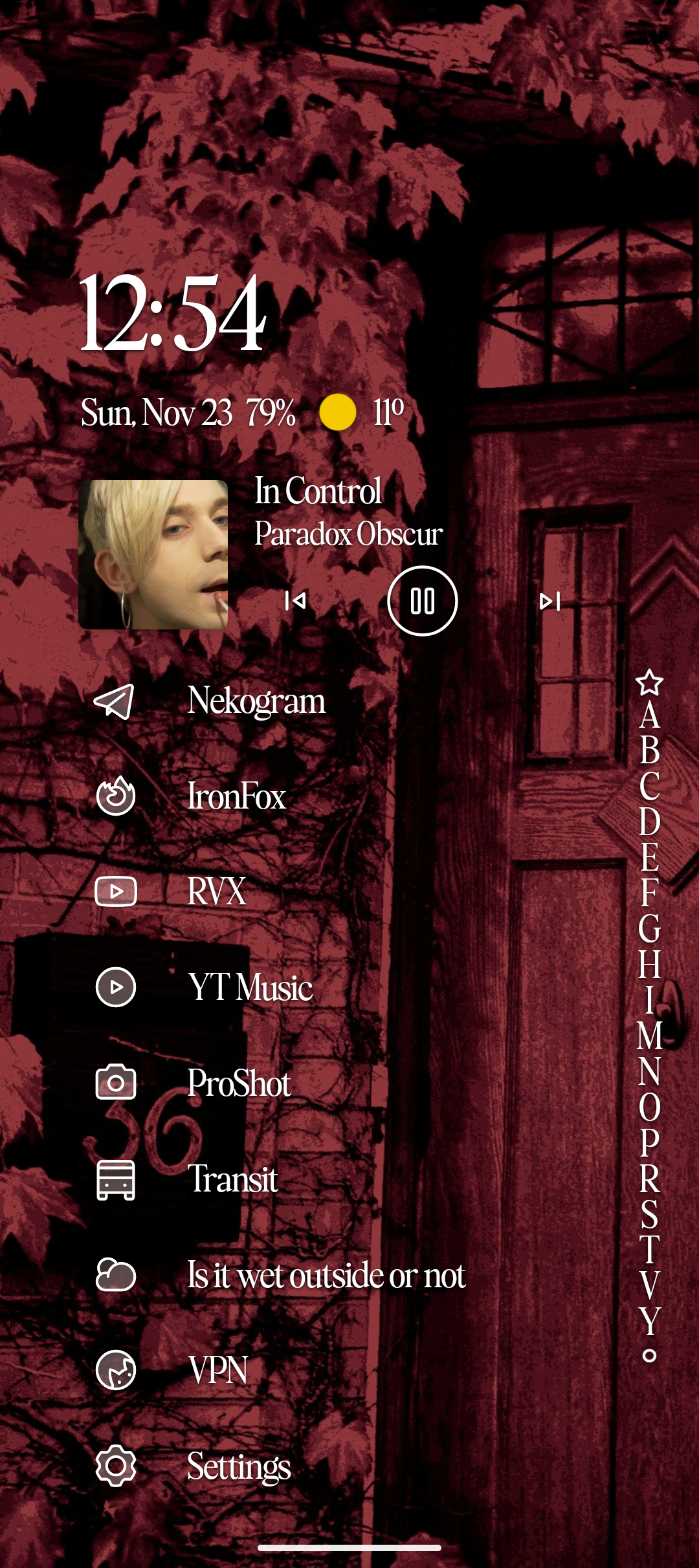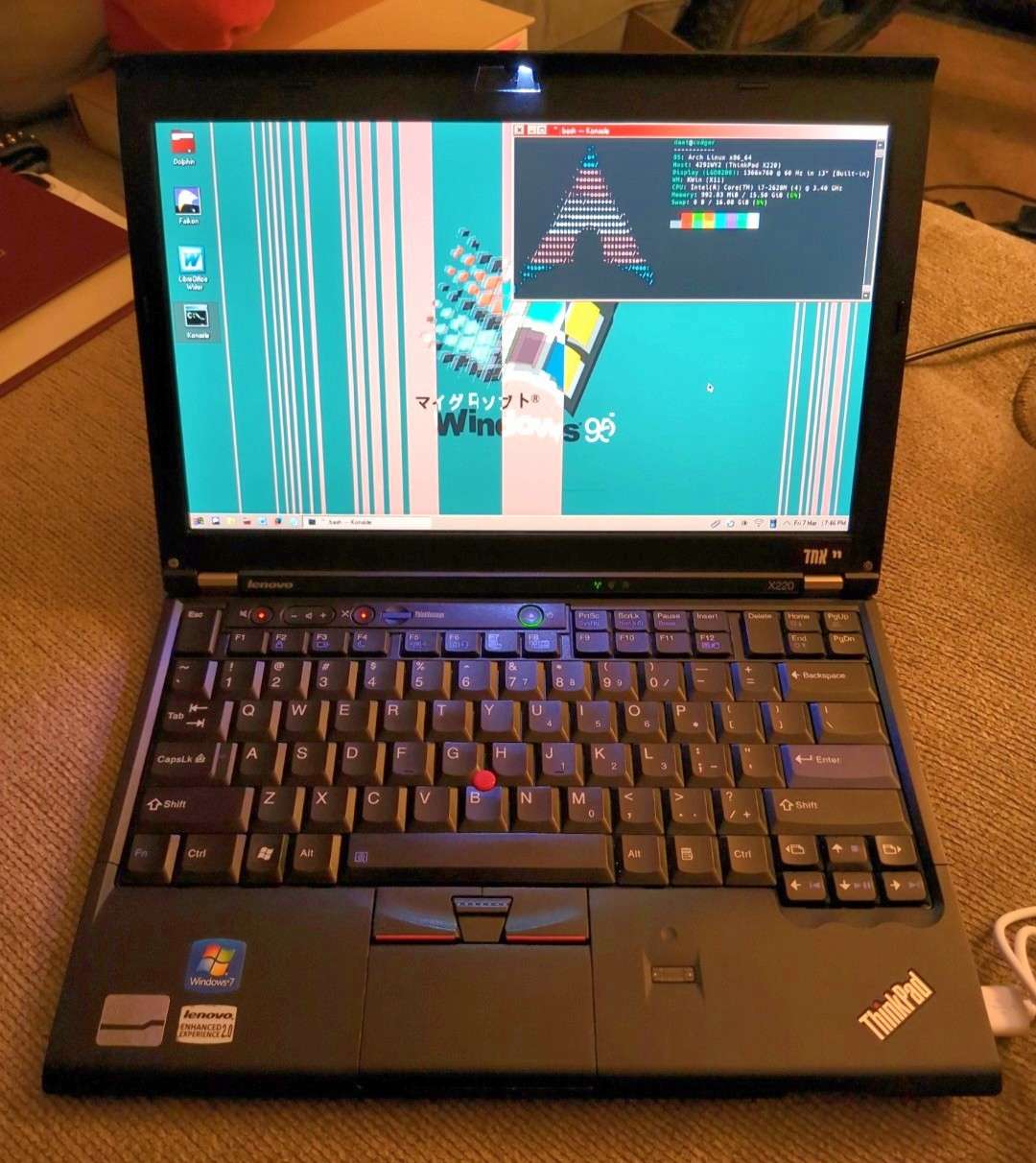Working on redoing this page! My tech stack has changed since it was last updated. The information is current but the page itself isn't done.


Working on redoing this page! My tech stack has changed since it was last updated. The information is current but the page itself isn't done.

I've recently landed on the NixOS Linux distro as my operating system of choice.
After years of using Arch and Arch-based distros on my x64 machines, I heard about NixOS from one of my partner's friends. After looking into it, I came to realize a few things:
The distro itself is built around the Nix package manager, which is declarative instead of imperative like apt or pacman; all installed packages and system configuration options are defined concretely in .nix files. When the system is built, it will look to those files, resolve those wanted packages (and even manage dependencies on a per-package basis, eliminating "dependency hell"), reconfigure everything, and reload the system.
If something breaks (which is usually user error), you can run a rollback command to revert to a previous "generation" of the system, then fix whatever you fucked up. It's very nice and it feels like how systems should just be. Maybe it's more useful for servers or mass deployments where system configs need to be reproducible, but I've been enjoying it on desktop immensely.
In addition to managing system configs, NixOS has modules which allow management of home directories. I use home-manager and plasma-manager to manage my per-user configurations and all my dotfiles.

In today's political (and economic) climate, especially with so much of our lives filtered through our phones, having control over what our phones are doing is good.
GrapheneOS is an Android derivation that works on modern Pixel devices. It's designed to be locked down; if you need Google services, you can opt to install sandboxed and isolated versions of them. System hardening is included, including some memory protections; there are open source app stores installed by default. You can even disable the internet permission for apps, which functionally disables them from sending data off to a server farm somewhere.
As a bonus, government actors have trouble breaking into phones running it.
 The boy
The boy

My ideal laptop is small, light, and without Intel or Nvidia. My Thinkpad X13 is all of those.
And yeah, I use the TrackPoint nipple.
It's almost tradition for me to enjoy the shit out of the Thinkpad X series at this point. I had an x220 (in the dead tech section below), an AMD X395, and now this X13. The battery life is REALLY GOOD, it doesn't get intolerably hot, and it performs well with what I do. I will be sticking with this machine for as long as I can.

My phone is a Google Pixel 9a running GrapheneOS.
The 5100mAh battery impressed me and the price was right. I just wish the camera was a little better, but I came from an iPhone 15 Pro, so I shouldn't expect much.
 My customized homescreen
My customized homescreen

My ThinkPad x220 finally died. I had it fully upgraded except for the screen resolution, and it just wouldn't turn on one day. I tore it apart, made sure everything looked OK, tried to turn it back on, and it wouldn't boot. Seeing as it was 14 years old, I decided to just get a new computer.
This is my computer. I have a high-end desktop but I end up using this laptop more since I travel a lot. I'm running Arch on it and even though it's a subcompact notebook from 2011 it still works super good!!
The x220 is part of the last generation of ThinkPad laptops with the "classic" keyboard. It's a dream to type on! Great for writing code.
I've done some stuff to it in order to modernize it:
 thinkpad x220
thinkpad x220